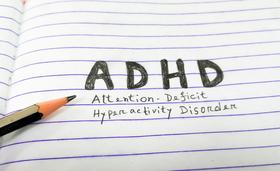Serving 428 students in grades Prekindergarten-5, Bankscaddell Elementary School ranks in the bottom 50% of all schools in Alabama for overall test scores (math proficiency is bottom 50%, and reading proficiency is bottom 50%).
The percentage of students achieving proficiency in math is 16% (which is lower than the Alabama state average of 24%). The percentage of students achieving proficiency in reading/language arts is 30% (which is lower than the Alabama state average of 46%).
The student:teacher ratio of 18:1 is equal to the Alabama state level of 18:1.
Minority enrollment is 87% of the student body (majority Hispanic), which is higher than the Alabama state average of 47% (majority Black and Hispanic).
Quick Stats (2024)
- Grades: Prekindergarten-5
- Enrollment: 428 students
- Student:Teacher Ratio: 18:1
- Minority Enrollment: 87%
- Overall Testing Rank: Bottom 50% in AL
- Math Proficiency: 16% (Btm 50%)
- Reading Proficiency: 30% (Btm 50%)
- Source: National Center for Education Statistics (NCES), AL Dept. of Education
Top Rankings
Bankscaddell Elementary School ranks among the top 20% of public schools in Alabama for:
Category
Attribute
Diversity
Percent Eligible For Free Lunch
School Overview
Bankscaddell Elementary School's student population of 428 students has declined by 8% over five school years.
The teacher population of 24 teachers has declined by 17% over five school years.
Grades Offered
Grades Prekindergarten-5
Total Students
428 students

Gender %

Total Classroom Teachers
24 teachers

Students by Grade

School Rankings
Bankscaddell Elementary School ranks within the bottom 50% of all 1,276 schools in Alabama (based off of combined math and reading proficiency testing data).
The diversity score of Bankscaddell Elementary School is 0.63, which is more than the diversity score at state average of 0.62. The school's diversity has stayed relatively flat over five school years.
Overall Testing Rank
#812 out of 1276 schools
(Bottom 50%)
(Bottom 50%)

Math Test Scores (% Proficient)
16%
24%

Reading/Language Arts Test Scores (% Proficient)
30%
46%

Student : Teacher Ratio
18:1
18:1

American Indian
n/a
1%

Asian
n/a
1%

Hispanic
52%
10%

Black
30%
32%

White
13%
53%

Hawaiian
n/a
n/a
Two or more races
5%
3%

All Ethnic Groups



Participates in the National School Lunch Program (NSLP)
Yes
Eligible for Free Lunch
84%
44%

Eligible for Reduced Lunch
4%
5%

School Statewide Testing
School District Name
Source: National Center for Education Statistics (NCES), AL Dept. of Education
Frequently Asked Questions
What is Bankscaddell Elementary School's ranking?
Bankscaddell Elementary School is ranked #812 out of 1,276 schools, which ranks it among the bottom 50% of public schools in Alabama.
What schools are Bankscaddell Elementary School often compared to?
Bankscaddell Elementary Schoolis often viewed alongside schools like Austinville Elementary School, Barkley Bridge Elementary School by visitors of our site.
What percent of students have achieved state testing proficiency in math and reading?
16% of students have achieved math proficiency (compared to the 24% AL state average), while 30% of students have achieved reading proficiency (compared to the 46% AL state average).
How many students attend Bankscaddell Elementary School?
428 students attend Bankscaddell Elementary School.
What is the racial composition of the student body?
52% of Bankscaddell Elementary School students are Hispanic, 30% of students are Black, 13% of students are White, and 5% of students are Two or more races.
What is the student:teacher ratio of Bankscaddell Elementary School?
Bankscaddell Elementary School has a student ration of 18:1, which is equal to the Alabama state average of 18:1.
What grades does Bankscaddell Elementary School offer ?
Bankscaddell Elementary School offers enrollment in grades Prekindergarten-5
What school district is Bankscaddell Elementary School part of?
Bankscaddell Elementary School is part of Decatur City School District.
School Reviews
Review Bankscaddell Elementary School. Reviews should be a few sentences in length. Please include any comments on:
- Quality of academic programs, teachers, and facilities
- Availability of music, art, sports and other extracurricular activities
Recent Articles

Spanking in Public Schools: The Ongoing Debate
Indeed, there are still school districts today in America that allow teachers to spank students. Learn about the current spanking situation in schools and why the debate continues to heat up.

Understanding ADHD in Children: Signs, Diagnosis, and Support Strategies
This comprehensive article explores the complex nature of attention-deficit/hyperactivity disorder (ADHD) in children, providing insights into its symptoms, diagnosis process, and effective support strategies. From recognizing early signs to navigating the diagnostic journey, parents will gain valuable knowledge to help their child thrive. Expert insights, real-life examples, and practical tips empower readers to create a supportive environment that meets the unique needs of children with ADHD.

March 04, 2024
Teaching in Contemporary TimesWe explore why individuals choose teaching, illuminating intrinsic motivations, the influence of role models, the pursuit of lifelong learning, and the aspiration to impact society.





